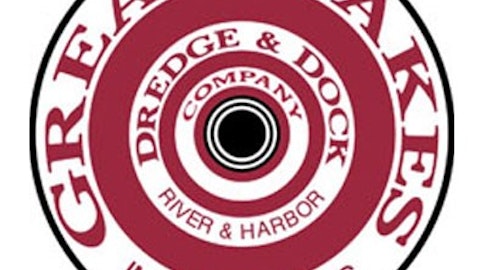
With BP plc (ADR) (NYSE:BP)’s recent earnings in the rearview mirror, investors are looking for any reason for enthusiasm they can find. Is BP finally out of the woods? Or is there further pain in store for investors?
Measured progress, but a long road remains
BP’s second quarter report showed signs of progress, but this is a company that continues to be under pressure from the effects of the 2010 spill.
Revenue clocked in at nearly $95 billion, and operating cash flow in the quarter was $5.4 billion, up $1 billion from the same quarter last year.
Of course, the major factor keeping a lid on BP plc (ADR) (NYSE:BP)’s growth remains the massive fees paid in relation to the Gulf spill. BP has shelled out a grand total of $42.4 billion in cumulative net charges relating to the incident.
As of the end of the most recent quarter, BP plc (ADR) (NYSE:BP) had paid $19.7 billion of the $20 billion trust fund the company established, leaving only $300 million for further expenditures. Should the company have to spend in excess of $20 billion, then those additional costs will be charged to the income statement in future quarters.
Transocean LTD (NYSE:RIG) is actually in a strong position, and is likely to emerge from the spill trial relatively unscathed. Even if Transocean is fined, the company has the financial flexibility to withstand even a severe hit from the trial: cash flow from operations totaled more than $2.7 billion in 2012, representing a 48% increase over the prior year. The company reported solid full-year results of $3.96 of adjusted earnings per share on the back of 15% growth in operating revenue.
Moreover, Transocean LTD (NYSE:RIG) recently instituted a dividend program. Shareholders recently received the first installment of the company’s $2.24 annual per-share distribution. This is no token dividend: investors will receive a 4.75% yield based on where the stock currently trades.
Is there any reason for hope for BP?
With numbers like $42 billion (and counting) in charges relating to the 2010 Gulf spill, most investors probably have a hard time coming up with any reason to stick with BP plc (ADR) (NYSE:BP). After all, there are many highly profitable oil majors out there to choose from that don’t have nearly the same headwinds as BP plc (ADR) (NYSE:BP).
I couldn’t blame any Fools for feeling that way, and as a result, I’d offer French oil major Total SA (ADR) (NYSE:TOT) as an alternative among European energy stocks. Total SA (ADR) (NYSE:TOT) is a $120 billion stock by market capitalization and affords investors the same international diversification benefits, without the added stress of the oil spill.
Total SA (ADR) (NYSE:TOT) reported first-quarter adjusted net income fell 6% in U.S. dollars year-over-year, to $3.8 billion, but the company is in a much less precarious position than rival BP. Total uses much of its cash flow to pay a generous dividend to shareholders. The company’s last four quarterly dividend payments add up to a 5.7% annualized yield.
On the topic of dividends, however, is where investors should feel good about owning BP. Shortly after the oil spill, BP was forced to suspend its dividend. When it resumed dividend payments, the company set distributions at half the level prior to the spill.
Since then, BP plc (ADR) (NYSE:BP) has grown its dividend at rates that far exceed the dividend growth of most other large-cap oil majors. Last year, BP raised its dividend by 13%, after a 15% boost the year before.
And, while it might seem absurd, BP’s share price may represent a value opportunity. First, let me fully acknowledge that $42 billion in legal costs is a gigantic number. Now that we have that established, let’s also recognize that shares of BP are still $18 per share lower than they were pre-spill.
That means that BP has lost $55 billion in market value based on its 3.1 billion shares outstanding. As a result, it seems that the market may be overreacting to what BP is likely to pay in total damages.
In addition, BP plc (ADR) (NYSE:BP)’s dividend yield sits at 5.1%, meaning shareholders are at least paid well to wait for the company to get past the lasting effects from the spill. There are clearly plenty of alternatives within the energy sector for investors to choose from, but for those who don’t mind taking the risk, BP could be a real long-term winner for patient investors.
The article After Earnings, Is BP Finally on its Way Back to Health? originally appeared on Fool.com and is written by Robert Ciura.
Robert Ciura owns shares of BP p.l.c. (ADR). The Motley Fool recommends Total SA. (ADR). The Motley Fool owns shares of Transocean. Robert is a member of The Motley Fool Blog Network — entries represent the personal opinion of the blogger and are not formally edited.
Copyright © 1995 – 2013 The Motley Fool, LLC. All rights reserved. The Motley Fool has a disclosure policy.





